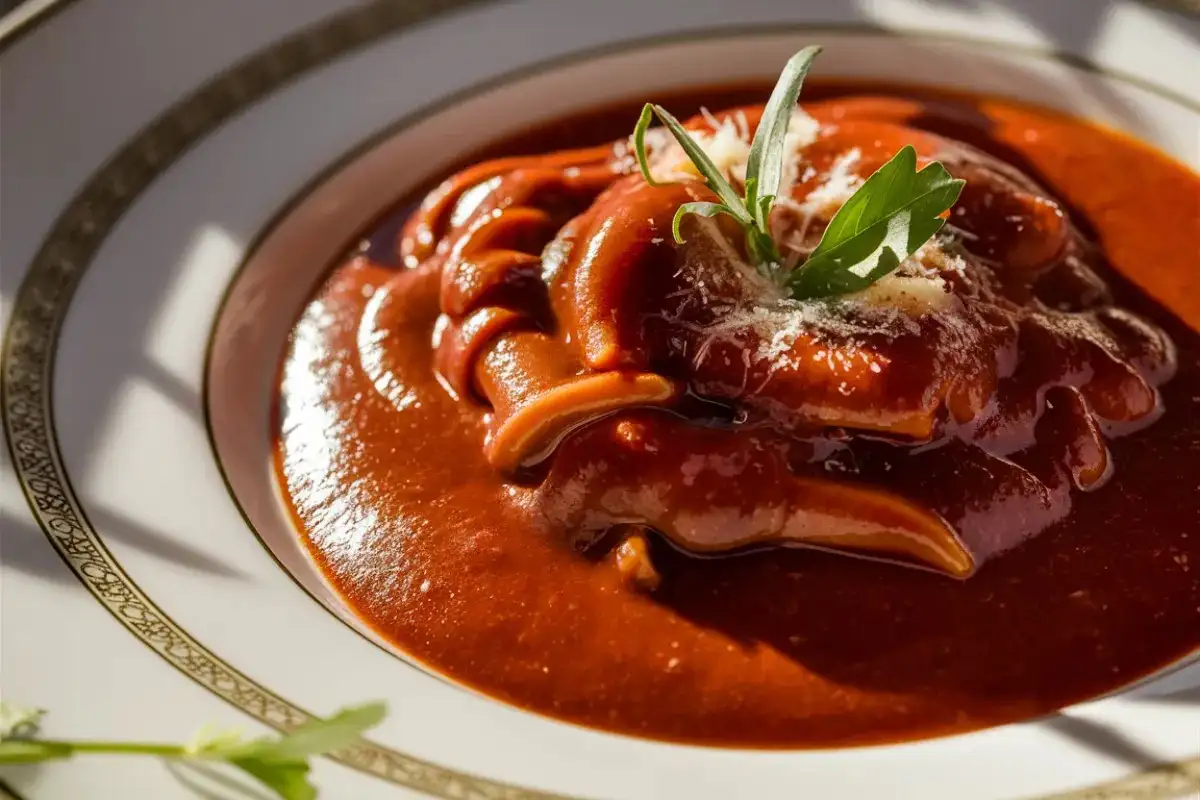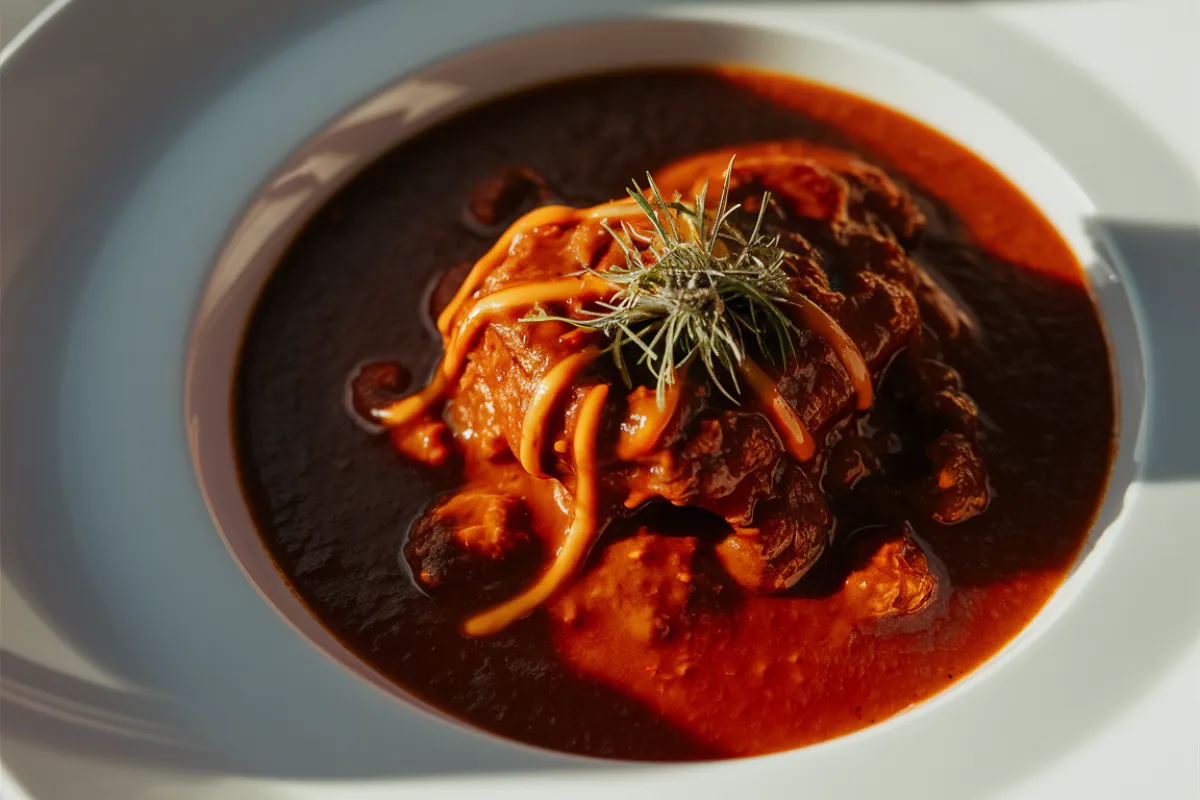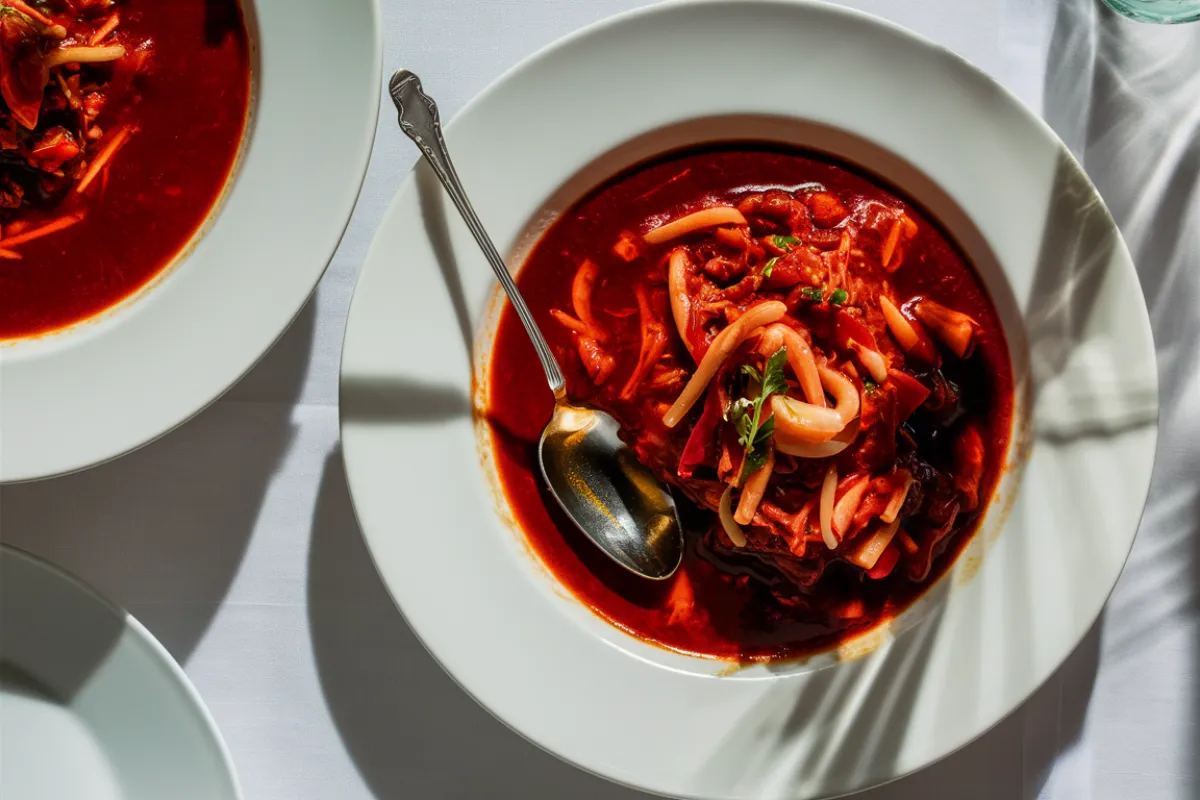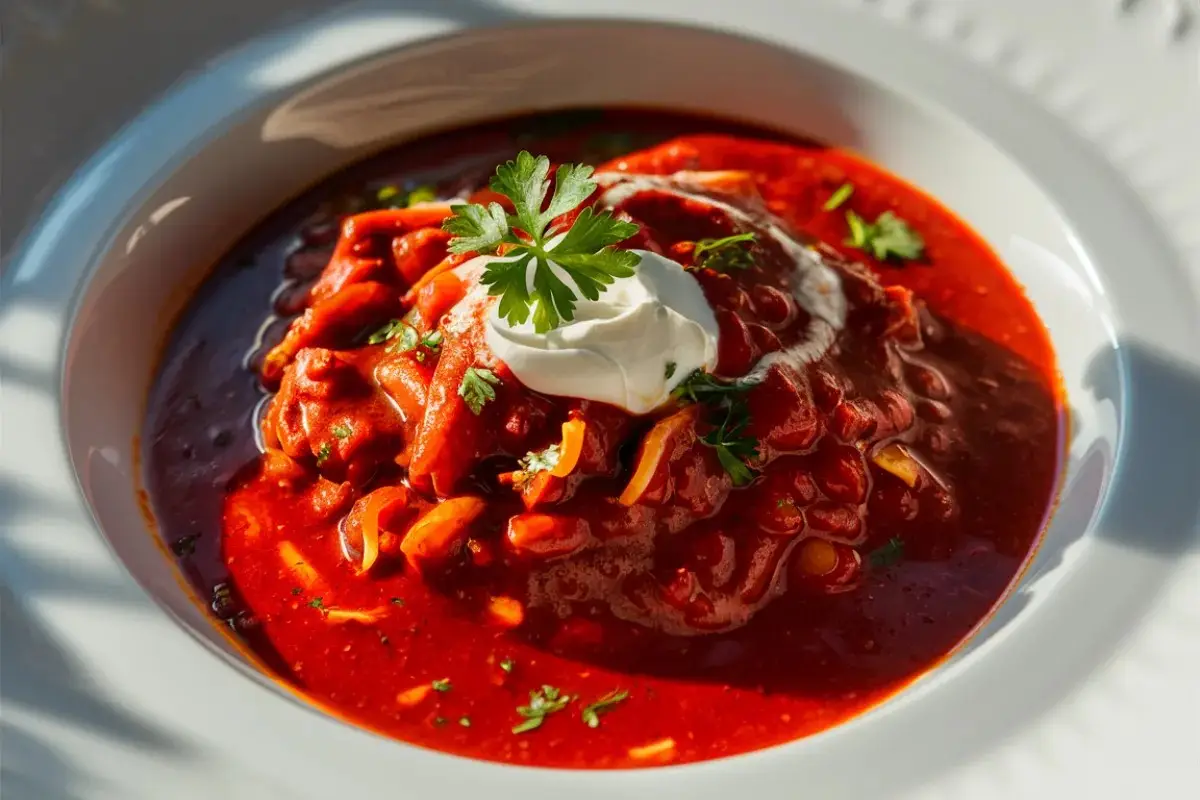Goulash, a timeless dish with deep roots in Hungarian cuisine, has won the hearts of many around the world. Known for its rich, comforting flavors, goulash is a stew or soup characterized by a unique sauce made from a combination of vegetables, meats, and spices. The dish has many variations, ranging from traditional Hungarian recipes to American adaptations. Yet, the central component remains the sauce, a flavorful blend that brings all the ingredients together. But what exactly makes up this sauce?
In this article, we’ll delve deep into the core and additional ingredients that make goulash sauce so distinctive, explore different variations across cultures, and provide step-by-step guidance on how to make your perfect version.
What is Goulash Sauce?
Goulash sauce is the base of a dish traditionally originating from Hungary, but with several adaptations worldwide, such as the American version. Typically, it is a tomato-based sauce enriched with a variety of spices, vegetables, and meats. The sauce provides a depth of flavor that is both savory and slightly sweet, with a hint of smokiness from paprika, which is a staple in goulash recipes.
Learn more about the different types of Hungarian paprika to understand its importance in authentic recipes.
Furthermore, you can serve goulash over pasta, potatoes, or rice, making it a versatile dish suitable for any occasion. The sauce itself can vary from a thicker, stew-like consistency to a thinner, soup-like broth, depending on the recipe and cooking method.
Core Ingredients in Goulash Sauce

The foundation of any good goulash sauce starts with a set of key ingredients that define its taste and texture. Let’s explore these essential components in detail:
- Tomato Base: A tomato base is the cornerstone of most goulash sauces. Typically, the tomato flavor is introduced through a combination of tomato paste, tomato sauce, and diced tomatoes. Each form of tomato contributes to the sauce’s unique flavor and texture:
- Tomato Paste: Adds a concentrated, rich tomato flavor that deepens the sauce.
- Tomato Sauce: Provides a smooth, slightly sweet base that balances the other ingredients.
- Diced Tomatoes: Adds texture and a hint of acidity that cuts through the richness of the meat.
- Meat: Meat is another fundamental ingredient in many goulash recipes. While ground beef is a popular choice, other meats such as pork, veal, or even chicken can be used. The type of meat selected significantly impacts the flavor profile:
- Ground Beef: Commonly used in American versions, providing a hearty and slightly fatty flavor.
- Pork or Veal: Often used in Hungarian versions, offering a tender, succulent texture and a milder flavor.
- Chicken: A lighter option, typically used in more modern or health-conscious adaptations.
- Aromatics: Aromatics like onions, garlic, and bell peppers form the base of the sauce, adding layers of flavor:
- Onions: Offer sweetness and depth, which are intensified when caramelized.
- Garlic: Provides a pungent, savory note that enhances the overall flavor profile.
- Bell Peppers: Add sweetness, color, and a subtle crunch.
- Spices and Seasonings: The seasoning is crucial in goulash sauce, with paprika being the most important spice. Paprika comes in various forms, such as sweet, hot, or smoked, each contributing different flavor notes. Other essential spices include:
- Bay Leaves: Impart a mild, herbal aroma.
- Caraway Seeds: Add a hint of anise flavor, often found in traditional Hungarian goulash.
- Black Pepper and Salt: Essential for balancing the flavors.
Additional Ingredients and Variations
While the core ingredients lay the foundation for a great goulash sauce, additional ingredients and variations can make the dish unique. Here are some common additions:
- Vegetables: Beyond the typical tomatoes and bell peppers, many goulash recipes include:
- Carrots: Add sweetness and texture.
- Potatoes: Thicken the sauce and add a hearty component.
- Celery and Parsnips: Enhance the depth of flavor with subtle, earthy notes.
- Herbs: Fresh or dried herbs like marjoram, thyme, rosemary, and oregano are often added to elevate the sauce’s complexity and aroma.
- Liquids: Adjusting the consistency of the sauce can be done by adding different liquids:
- Beef Broth: Adds a rich, savory base.
- Red Wine: Contributes acidity and depth.
- Water: A neutral addition that thins the sauce without altering the flavor.
- Optional Additions: To further customize the sauce, some cooks add ingredients like Worcestershire sauce, soy sauce, or a dash of vinegar for tanginess and complexity.
How to Make Goulash Sauce: Step-by-Step Guide

Crafting the perfect goulash sauce requires attention to detail and patience. Here is a step-by-step guide to help you make a delicious and authentic goulash sauce:
Prepare Your Ingredients: Start by gathering all the necessary ingredients. Chop onions, garlic, and bell peppers. If using potatoes or other vegetables, dice them into bite-sized pieces.
Sauté the Aromatics: Heat a large pot or Dutch oven over medium heat. Add a bit of oil or butter, and sauté the onions until they become translucent and start to caramelize. Next, add the garlic and bell peppers, and continue to sauté until they are soft and fragrant.
Brown the Meat: After sautéing the aromatics, add the chosen meat (ground beef, pork, veal, or chicken) to the pot. Cook until browned, breaking it up with a spoon or spatula as it cooks. This step helps build a rich flavor base for the sauce.
Add the Tomato Base: Then, stir in the tomato paste, allowing it to cook for a minute or two to release its deep, concentrated flavor. Afterward, add the tomato sauce and diced tomatoes, stirring well to combine all the ingredients.
Season the Sauce: At this point, sprinkle in the paprika, bay leaves, caraway seeds, salt, and pepper. If using fresh or dried herbs, add them now. Stir well to ensure all the spices are evenly distributed throughout the sauce.
Simmer and Adjust Consistency: Once the sauce is seasoned, add your chosen liquid (beef broth, red wine, or water) to the pot. Bring the mixture to a simmer and let it cook slowly over low heat for at least 30-45 minutes. This allows the flavors to meld together and the sauce to thicken. If the sauce becomes too thick, add more liquid as needed.
Taste and Adjust Seasoning: As the sauce simmers, taste it periodically and adjust the seasoning with more salt, pepper, or paprika if needed. If you prefer a bit more tang, consider adding a splash of vinegar or Worcestershire sauce.
Serve and Enjoy: Finally, once the sauce has reached your desired consistency and flavor, remove the bay leaves and serve the goulash over pasta, rice, or potatoes, or enjoy it on its own.
Types of Goulash Sauce
Goulash sauce varies significantly across cultures, with each version bringing something unique to the table. Here are some of the most popular types:
Traditional Hungarian Goulash Sauce
Hungarian goulash, or “Gulyás,” is a beloved national dish known for its robust flavor and use of high-quality paprika. Unlike many other versions, people often serve Hungarian goulash as a soup, and its sauce tends to be thinner and brothier.
- Core Ingredients: Large chunks of beef (such as shank or shoulder), onions, garlic, bell peppers, tomatoes, and a generous amount of Hungarian paprika.
- Additional Elements: Caraway seeds, bay leaves, and fresh herbs like parsley.
- Cooking Technique: Typically, the beef is browned first, then simmered slowly in a mixture of onions, paprika, and broth. The result is a rich, flavorful broth with tender chunks of meat.
For a deeper dive into the traditional ingredients and methods, see what is traditional goulash made of.
American Goulash Sauce
American goulash, also known as “American Chop Suey,” is a one-pot dish that differs significantly from its Hungarian counterpart. It is quicker to prepare and features a thicker, tomato-based sauce.
- Core Ingredients: Ground beef, onions, garlic, tomato sauce, and macaroni.
- Additional Elements: Green bell peppers, Worcestershire sauce, and cheddar cheese.
- Cooking Technique: The ground beef is cooked with onions and garlic, then simmered with tomato sauce and spices. Cooks often cook the pasta directly in the sauce, allowing it to absorb the flavors and create a cohesive dish.
If you are curious about how to prepare different goulash versions, explore goulash recipes for a variety of options.
German and Austrian Variations
Goulash has also found its way into German and Austrian kitchens, where cooks often adapt it to local tastes:
- German Goulash: Cooks often make this version with beef or pork and season it with paprika, caraway seeds, and sometimes a splash of red wine. It is usually served with dumplings, noodles, or bread.
- Austrian Goulash: Similar to the Hungarian version but with additional spices like marjoram and thyme. It is often thicker and more stew-like, perfect for cold weather.
Unique Twists on Goulash Sauce

While traditional and regional variations provide a solid foundation for goulash, many cooks like to add their twist to make the dish their own. Here are some creative ideas:
- Add Sweetness: A touch of brown sugar or honey can help balance the acidity of the tomatoes and create a more complex flavor profile.
- Incorporate Smoked Paprika: Smoked paprika adds a deep, smoky flavor that enhances the overall taste of the sauce.
- Experiment with Peppers: Swap out the traditional bell peppers for poblano or Anaheim peppers for a mild heat or use jalapeños or serranos for a spicier kick.
- Include Beans or Lentils: For a heartier, protein-rich version, consider adding beans (such as kidney or black beans) or lentils to the sauce.
Pairing Suggestions for Goulash Sauce
A great sauce deserves the perfect side dish. Here are some ideas for what to serve with your goulash:
- Pasta: Serve over egg noodles, spaghetti, or any pasta of your choice. The pasta will soak up the sauce and make each bite incredibly flavorful.
- Rice: A great option to balance the flavors and add a subtle, neutral base that allows the goulash sauce to shine.
- Potatoes: Mashed, roasted, or boiled potatoes are perfect for soaking up the rich sauce.
- Crusty Bread: Use bread to scoop up the sauce for a delicious and satisfying meal.
For more detailed pairing options, check out what to serve with goulash.
Frequently Asked Questions (FAQs)
1. What is the difference between Hungarian and American Goulash?
Hungarian goulash is typically a soup or stew made with chunks of beef, vegetables, and paprika, resulting in a flavorful broth. On the other hand, cooks make American goulash as a one-pot meal with ground beef, pasta, and a tomato-based sauce.
2. Can I use different types of meat in goulash sauce?
Yes, you can use a variety of meats such as beef, pork, veal, or even chicken. Each type of meat will bring its own unique flavor and texture to the dish.
3. How can I make goulash sauce thicker or thinner?
To thicken goulash sauce, simmer it uncovered to reduce the liquid, or add more tomato paste. To make it thinner, add additional broth or water until the desired consistency is reached.
4. What spices are essential in goulash sauce?
Paprika is the most essential spice in goulash, providing its distinctive flavor and color. Other important spices include garlic, black pepper, and bay leaves.
5. Can I make goulash sauce ahead of time?
Absolutely! You can make goulash sauce in advance and store it in the refrigerator for up to 3 days or freeze it for up to 3 months. Reheat it gently on the stovetop before serving.
Conclusion
In conclusion, goulash sauce is a versatile, flavorful base that has adapted to suit various tastes and cultural preferences. Whether you lean towards a traditional Hungarian version or prefer the American take, mastering the art of crafting this sauce starts with understanding its core ingredients and cooking techniques.
With countless variations and opportunities for customization, goulash is a dish that encourages creativity in the kitchen. So, experiment with new ingredients, adjust the seasoning to your liking, and discover your perfect version of this comforting classic.
Enjoy the rich flavors of goulash, and don’t be afraid to put your unique twist on this beloved dish!

